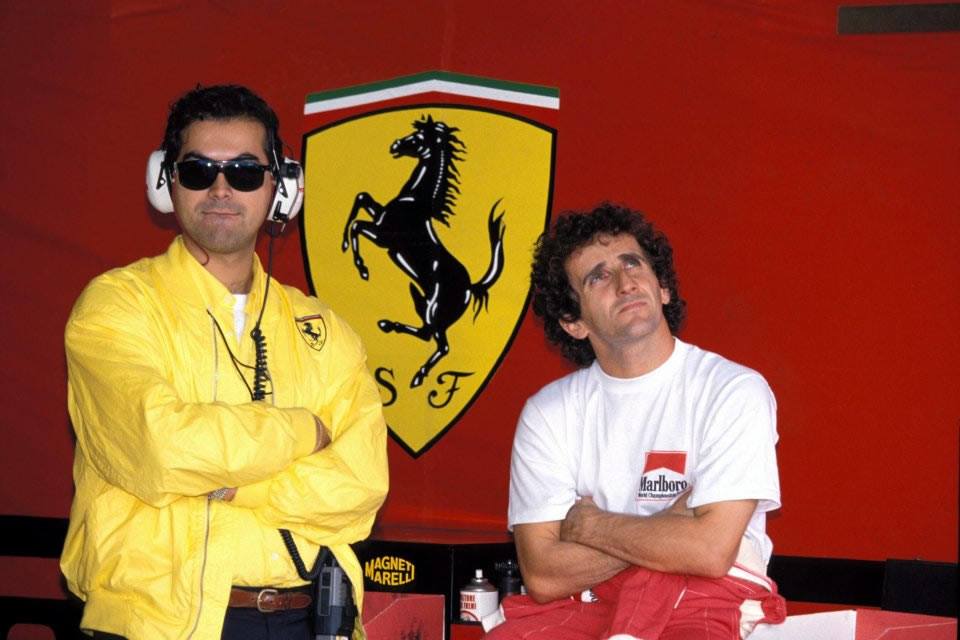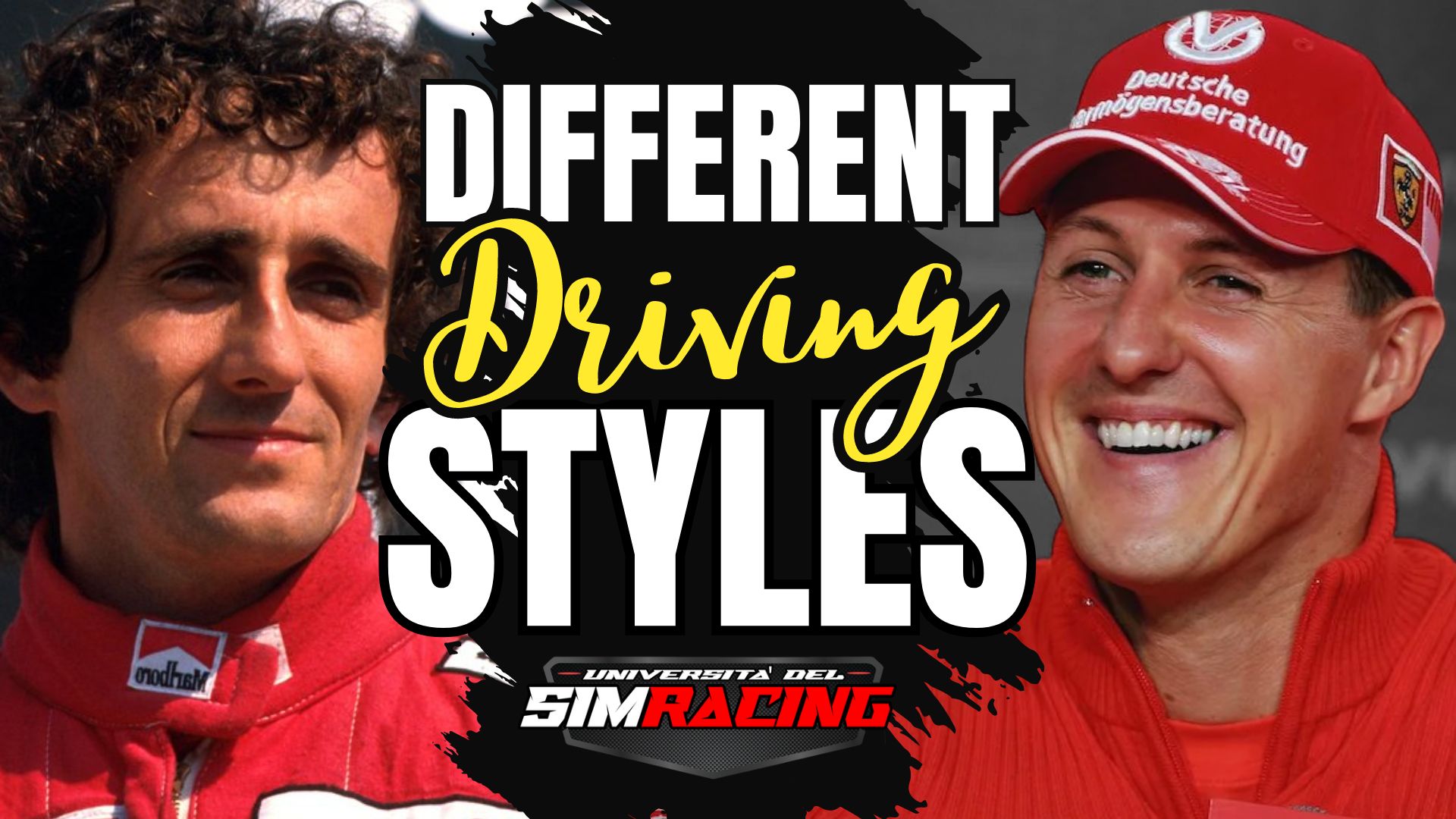Luigi Mazzola: Prost - Schumacher - Raikkonen Driving Styles
Welcome to a new blog post in collaboration with Engineer Luigi Mazzola, Co-Founder and Performance Coach at Università del SimRacing.

During his twentyone years at Ferrari, the “Ingegnerissimo” served as a Track Engineer and Head of the Test Area for the Cavallino.
His experience allowed him to work with some of the greatest drivers in Formula 1 history.
He observed their key differences, strengths, weaknesses, and most importantly, their driving styles.
In this article, extracted from one of his talks during our training sessions, we'll reveal the differences between the driving styles of:
- Alain Prost
- Michael Schumacher
- Nigel Mansell
- Kimi Räikkönen
Let's dive right in with the words of the Engineer!

Alain Prost
Each driver has a unique driving style.
Every driver has their own way of driving, their setup needs, and their approach to the circuit that sets them apart.
A driver's style can be defined through three elements: the steering wheel, the accelerator, and the brake, and how they use these three devices in slow, medium-slow, and fast corners, during braking, mid-corner, and corner exit.
From my history, there are drivers who prefer understeer and others who prefer oversteer.
You can see this on television by observing how tire wear affects the front or rear more, depending on the driver's style.
If we look back in history, Alain Prost, with whom I started as a track engineer back in 1990, was a unique driver.
He didn’t brake abruptly but instead braked while entering the corner.
The French had the ability to avoid overheating the brakes; with him, I couldn't get the brakes to heat up.
I had to close all the air intakes to bring the carbon brakes to the necessary temperature of at least 400 degrees to be effective.
Prost carried a lot of speed into corners, which required substantial rear stability.
Otherwise, the car would be unstable, causing understeer which brings stability.
Prost didn't brake sharply but entered the corner first and then braked, maintaining rear stability and accepting a certain degree of understeer.
This doesn’t mean he couldn’t handle oversteer; all drivers can drive with oversteer, but it depends on the driver's characteristic style.

Nigel Mansell
For example, Nigel Mansell had a very different setup, with a car more front-focused, with much more front wing and power.
This allowed him to enter corners with a lot of oversteer, but at the cost of rear tire wear.
Prost, on the other hand, managed to keep the tires in good condition during the race, using lower pressures than others.

Michael Schumacher
Michael Schumacher, however, had a versatile and adaptable driving style.
His braking was quite decisive, but he adapted to the situation, behaving like a chameleon.
Despite this, he struggled with understeer and required a lot of rear stability, putting the rear tires under stress.

Kimi Räikkönen
Kimi Räikkönen did not favor understeer, preferring oversteer.
He carried a lot of speed into corners without braking sharply, but maintained a constant speed through the corner.
Unlike drivers like Rubens Barrichello or Felipe Massa, who braked straight and then turned, Räikkönen managed corners with a fluid speed.

Those who work with drivers need to understand each one’s preferences and adjust the setup accordingly.
Every style requires a specific type of setup, but sometimes it's necessary to ask the driver to adapt their approach in certain corners or specific situations to optimize overall performance.
Even on simulators, every driver is unique.
You always need to adapt your driving style to your needs.
How you brake, how you carry speed into the corner, and how and when you apply throttle on corner exit...
However, to develop your own driving style that allows you to master the car better, reduce tire wear, and consistently go faster...
...you first need to learn to drive fast on simulators.
It’s a process that requires time, dedication, commitment, and above all, investment in yourself.
Once you've mastered and applied these techniques correctly, with any car or track you try, you’ll have the keys to achieving your goals on track and beating your competitors.
There’s no other solution: YOU MUST MASTER THE DRIVING TECHNIQUES PROPERLY.
We at USR will help you do this in the fastest and most profitable way possible.
We are professionals in the sector and have already helped thousands of drivers significantly lower their lap times.
Continue reading our blog posts by clicking the button below:
See you soon!
